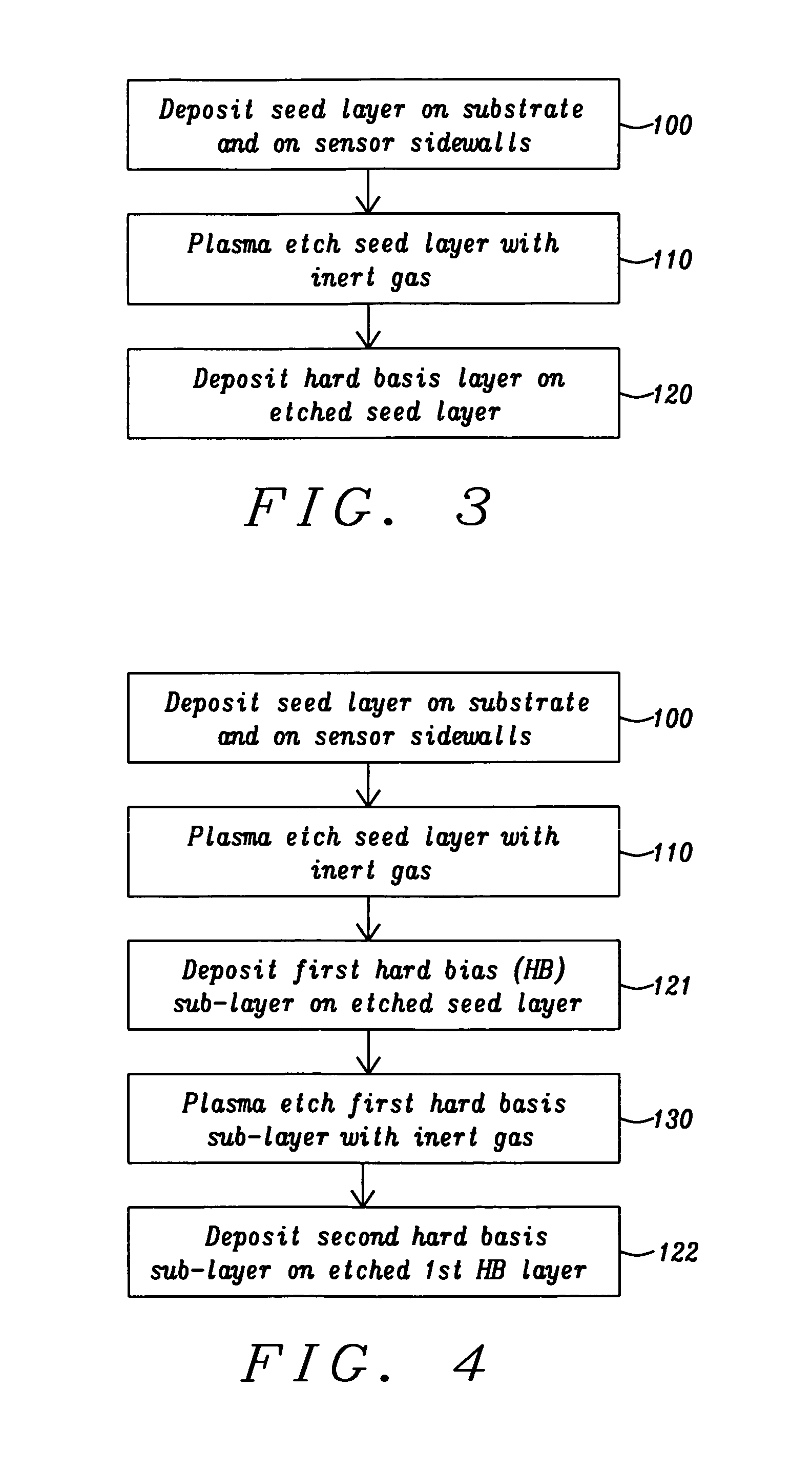Method for fabricating a high coercivity hard bias structure for magnetoresistive sensor
a magnetoresistive sensor and high coercivity technology, applied in the field of high coercivity hard bias structure for magnetoresistive sensors, can solve the problems of hysteresis or non-linear response of the sensor, degrade performance, and free layer becomes more volatile and difficult to bias, and achieves a high recording density and greater coercivity
- Summary
- Abstract
- Description
- Claims
- Application Information
AI Technical Summary
Benefits of technology
Problems solved by technology
Method used
Image
Examples
first embodiment
[0020]An important feature according to the present invention is a hard bias structure comprised of seed layer 10 and hard bias layer 11 formed on opposite sides of the sensor structure wherein the seed layer contacts the sensor sidewalls 9a, 9bincluding exposed portions of free layer 7. The hard bias structure described herein is designed to have a high coercivity in order to stabilize the magnetization of the free layer 7 along an easy axis which is depicted as the (+) or (−) x-axis direction. Preferably, the coercivity of the hard bias layer 11 is substantially greater than 2000 Oe, and more preferably, greater than or equal to about 2300 Oe in order to stabilize a free layer 7 in a sensor, especially in designs where a small sensor is required to meet requirements for a high areal recording density. For example, the hard bias structure prevents stray magnetic fields generated by a magnetic medium from inadvertently switching the magnetization direction of the free layer.
[0021]Th...
second embodiment
[0031]A process flow diagram for the second embodiment is illustrated in FIG. 4. Steps 100 and 110 are followed as in FIG. 2. Thereafter, in step 121, the first hard bias sub-layer is deposited by an IBD or sputter deposition process. In step 130, the first hard bias sub-layer is mildly etched by a process that may comprise the same conditions as described previously for the seed layer etch. In one aspect, a top portion about 10 to 15 Angstroms thick of the first hard bias sub-layer is removed during step 130 to provide a surface having an increased number of nucleation sites. During step 122, the second hard bias sub-layer is deposited on the etched first hard bias sub-layer. The increased number of nucleation sites on the surface of the etched first sub-layer is responsible for promoting a smaller average grain size in the second hard bias sub-layer formed in step 122, especially in a lower portion of the second sub-layer formed along the interface with the first hard bias sub-lay...
PUM
| Property | Measurement | Unit |
|---|---|---|
| thickness | aaaaa | aaaaa |
| thickness | aaaaa | aaaaa |
| thickness | aaaaa | aaaaa |
Abstract
Description
Claims
Application Information
 Login to View More
Login to View More - R&D
- Intellectual Property
- Life Sciences
- Materials
- Tech Scout
- Unparalleled Data Quality
- Higher Quality Content
- 60% Fewer Hallucinations
Browse by: Latest US Patents, China's latest patents, Technical Efficacy Thesaurus, Application Domain, Technology Topic, Popular Technical Reports.
© 2025 PatSnap. All rights reserved.Legal|Privacy policy|Modern Slavery Act Transparency Statement|Sitemap|About US| Contact US: help@patsnap.com



